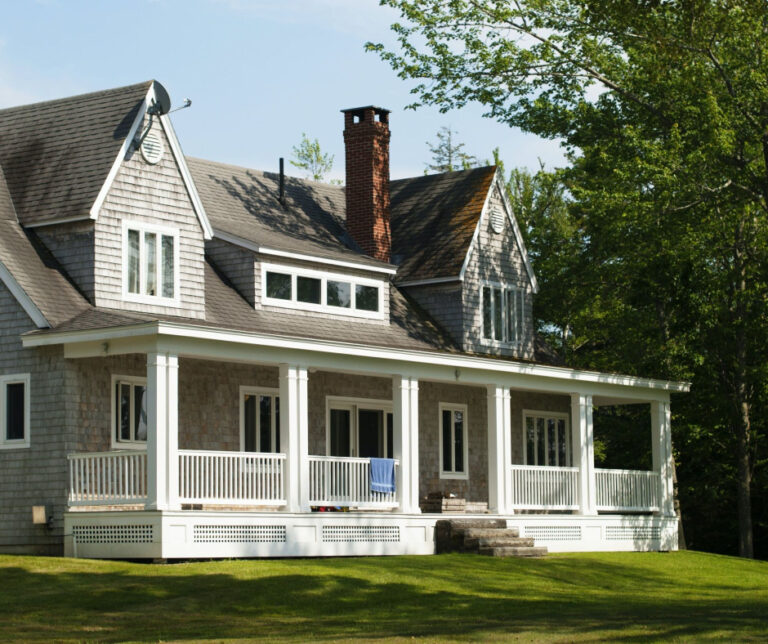How Lenders Price Mortgage Rates
This guide covers how lenders price mortgage rates. Many borrowers often ask how lenders price mortgage rates on FHA, VA, USDA, and conventional loans. In general, lenders charge higher mortgage rates if the borrowers are high-risk borrowers. Higher-risk borrowers are determined with credit scores on government loans. The lower the borrower’s credit scores, the higher the risk.
Nobody has a crystal ball as to how timely a borrower will be. However, lenders, as well as other creditors, will use the borrower’s past payment performance as an indicator for future performance.
The ability to repay the new mortgage is very important. Lenders are not interested in foreclosing property in the event borrowers default on their loans. Lenders want borrowers to make timely payments on their mortgage. This is why mortgage rates for borrowers with lower credit scores are much higher than for borrowers with high credit scores.
How Lenders Price Mortgage Rates
In this section, we’ll discuss how lenders price mortgage rates. Mortgage rate pricing can be a multifaceted, complex process driven by multiple interrelated aspects. Here’s how lenders price mortgage rates. They tend to work in a step-wise approach regarding interest rates at the outset of the loan agreement.
How Lenders Price Mortgage Rates – Know Your Options!
Apply Now And Get recommendations From Loan Experts
Major Elements Dictate How Lenders Price Mortgage Rates
Indicators that Determine Mortgage Rates
- Policy on Money supply and circulation administered by the Federal Reserve
- Rate of inflation
- Proportion of unemployment
- Rate of economic growth as measured by the GDP of the country
- General business environment and condition of the economy
Economic Factors
- Yield on the 10-Year Treasury Note (Main reference)
- Market for Mortgage-Backed Securities
- General trends prevailing in the mortgage investment market
- Long-term expectations of the economy
Personal Factors Relating to Loan’s Borrower
- Current score on credit report
- Amount paid in deposit
- The ratio of the total length of income earned to debts incurred (DTI)
- Value of loan as ratio to the appraisal of collateral (LTV)
- Kind of structure
- Term of the loan
- Type of loan taken within its category (conventional, FHA, VA, jumbo)
Loan Agreement Pricing Approaches
Primary Base Rates for Inclusion Settled Upon. Lenders generally have a primary base rate, which starts with the bond market, which pays them on mortgages in issue and their price. The other base rate is maintained on banks.
- Also known as private equity funds, including 1-3% of the primary’s base.
- From bonds, margins pay them through bonds, meaning in tertiary markets.
- Adjust their profit margin alongside additional risk per loan.
Mortgage Calculated on Risk-based Loans
- A certain amount of high reserved credit risk suggests higher adjustment rates are determined, or specifically tailored rates suggest an initial rise be placed.
- A large portion of the likely scored credit burden rating is ideal and gives allowance to the designated price mark.
- Consequence leads mortgage also imposed a penalty for lower funded amounts placed.
- Compared to primary residences, investment properties bear a higher interest rate.
Competition in The Market
- Financial institutions compete for clients with attractive interest offers.
- Rate pricing is not stuck everywhere.
- Credit unions and local banks have strategic deal pricing.
- Unlike brick-and-mortar lenders, online lenders have lower operating costs, driving down prices.
Volatility of Pricing and Rate Lock
- Rate Lock Type Mechanisms
- Most borrowers are allowed to lock rates for thirty to sixty days.
- For a rate lock period, it tends to be more expensive to set a lower rate.
- Depending on market conditions, rates sway many times a day.
Reasons for Rate Changes
- Economic news is published daily.
- Guideline standards put in place by the Fed.
- Changes in foreign economies.
- Attitude of investors.
- Global tensions.
Additional Reasoning to Consider In Pricing Rates
Loan Types
- Finance with the most responsive option, Conventional loans
- Pricing is slightly altered for these loans, which are issued with government insurance and FHA loans.
- Provided with more favorable rates from the government and often have lower rates, such as VA loans.
- Carry increased lending risk and usually bear higher rates, such as jumbo loans.
Closing Costs
- Paying these allows buyers to reduce interest rates for a loan, also known as buying down debt.
- Payments usually decrease by 0.25 percent for every point bought.
- A point is a payment of 1 percent of the loan amount.
- Suggestion not mandatory but recommend break-even analysis
Technology’s Role in Rate Pricing
Complex Models of Pricing
- Algorithms based on machine learning
- Analysis of market data
- Overview of risk calculations
- Individualized rate assessments
Tools for Digital Comparison
- Mortgage-service websites
- Generators for mortgage quotes with no delay
- Pricing transparency
Guidelines for Borrowers to Follow
- Strive to achieve the highest credit score.
- Aim to keep debt at a minimum.
- Have a sufficient amount of savings to afford large deposits.
- Look around multiple banks for better offers.
- Tactically decide when to lock in the interest rate.
- Focus on the overall cost of the loan rather than the interest.
- Gain prior endorsement from lenders to know what terms are unique to them.
Tips for Shopping Rates
- Ask for several loan estimate documents.
- Total the yearly rate versus the stated interest rate.
- Check the quoted costs of settling the account.
- Reputation and the quality of services the loaner provides should be factored.
- Considering these intricacies, borrowers can navigate the mortgage rate optimally and obtain better terms.
FHA vs. Conventional Loans – Which One Is Right for You?
Apply Now And Get recommendations From Loan Experts
How Lenders Price Mortgage Rates On FHA Versus Conventional Loans
There are certain factors that lenders consider risks. With risk, there are pricing adjustments on mortgage rates. Conventional loans are not government loans. There is no government agency like HUD, VA, USDA that insures and/or partially guarantees conventional loans. Therefore, there are pricing adjustments on mortgage rates with conventional loans. Any loan-to-value that is greater than 80%, has a loan-level pricing adjustment on conventional loans. This is because the less equity borrowers have on conventional loans, the higher the risk for lenders. This is not the case with government loans. For example, there are no pricing adjustments on mortgage rates with FHA loans with 3.5% versus 20% down payment. This is because if the borrower defaults on an FHA loan, FHA will insure and partially guarantee the lender against the loss.
How Lenders Price Mortgage Rates On FHA Versus Conventional Mortgage Rates
FHA loans are one of the most popular loan programs in the United States. Due to the government guarantee, lenders are more than eager to extend credit and offer FHA loans with a 3.5% down payment with less than perfect credit at great mortgage rates. Due to the guarantee by HUD, mortgage rates on FHA loans are lower than conforming loans.
On average, mortgage rates on FHA loans are anywhere between 0.25% and 0.50% lower than conventional rates when comparing borrowers with similar credit scores. However, FHA loans have a one-time FHA mortgage insurance premium of 1.75% and a lifetime FHA annual mortgage insurance premium of 0.55%.
Any conventional loans with greater than 80% loan-to-value require private mortgage insurance. HUD allows borrowers with credit scores as low as 500 to qualify for an FHA loan. The minimum credit score required to qualify for a 3.5% down payment home purchase FHA loan is 580 FICO.
Other Pricing Adjustment Factors On Mortgage Rates On FHA Loans
There are other pricing adjustments on mortgage rates with FHA loans besides credit scores. Loan Level Pricing Adjustments are also referred to as LLPAs. The higher the risk, the higher the mortgage rates. Here are factors that affect mortgage rates on FHA loans:
- Credit scores
- Debt to income ratio: The higher the DTI the higher the rates
- Manual versus automated underwriting system: There are pricing hits on manual underwriting
- Type of property: Single-family homes are considered the safest with no pricing adjustments
- There are pricing adjustments on condos, townhomes, and 2- to 4 unit multi-family homes
- Loan size: There are pricing adjustments on lower loan sizes, such as under $200,000
- Loan Type (Purchase, Streamline Refinance, 203k Rehab, Construction)
- There are LLPAs on where the property is located: Some counties and states are considered a higher risk for lenders
Prior bad credit has no pricing adjustments on mortgage rates. For example, a prior bankruptcy, foreclosure, deed in lieu of foreclosure has no bearing on mortgage rates. Lenders understand borrowers can have prior periods of bad credit due to extenuating circumstances.
Preparing For A Mortgage By Boosting Credit
Homebuyers should take time to boost their credit prior to applying for a mortgage. There are quick fixes for boosting your credit that do not take a long time. The team at Mortgage Lenders for Bad Credit can give borrowers some quick tips on boosting their credit scores. Having three revolving credit accounts is key. If you do not have any credit cards due to bad credit, consider getting three secured credit cards with at least a $500 credit limit on each card.
One installment credit-builder account will do great wonders. Maximizing your credit scores prior to applying for a mortgage will get you the best mortgage rates on any type of home loan.
For more information about this topic or to get pre-approved with a national five-star lender licensed in multiple states, please contact us at Mortgage Lenders for Bad Credit at 800-900-8569 or text us for a faster response. Or email us at gcho@gustancho.com. The team at Mortgage Lenders for Bad Credit is available 7 days a week, evenings, weekends, and holidays.






